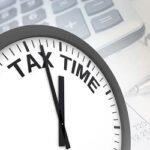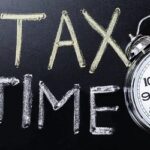The method of accounting that an assessee chooses to use can significantly impact the computation of their income under the heads of business or profession (Section 28) and income from other sources (Section 56). While the choice of method lies with the assessee, it is essential to note that they must demonstrate that they have followed the chosen method regularly for their own purposes.
This principle was established in the landmark case of CIT v. McMillan & Co. (1958) 33 ITR 182 (SC). The case highlighted that the decision on the method of accounting lay with the assessee, but the chosen method must be consistently followed to determine income tax liability.
Section 145(1) of the Income Tax Act, 1961 provides that Income under the head “Profits & Gains from Business & Profession” or Income from Other Sources shall be either cash or mercantile system of accounting that the assessee regularly employs.
While Section 145(1) mandates the use of either the cash or mercantile method, some assessees prefer to follow the combined method of accounting, which includes both cash and mercantile systems. However, the combined method is generally not allowed, and assessees must choose either the cash or mercantile method.
It is essential for assessees to understand the implications of their choice of accounting method on their tax liability. The cash method of accounting records income and expenses when they are received and paid, respectively. This method is particularly suitable for small businesses or individuals with limited financial resources and helps to avoid overpaying taxes.
On the other hand, the mercantile method records income and expenses when they are earned and incurred, respectively, regardless of whether the payment has been made or received. This method provides a more accurate representation of a business’s financial status, especially for larger organizations, but can result in higher tax liability.
The importance of consistently following the chosen method of accounting cannot be overstated. Tax authorities will scrutinize the method used and verify that it has been consistently applied by the assessee. Any inconsistency or discrepancy in the chosen method can lead to additional tax liability, penalties, and even legal action.
It is also worth noting that the provisions of Section 145(1) do not apply to salaries (Section 15), income from house property (Section 22), and capital gains (Section 45). Although dividend income is taxable as income from other sources (Section 56(2)(i)), it is taxable as the income of the year in which it is declared, irrespective of the method of accounting employed by shareholders.
In conclusion, while the choice of accounting method lies with the assessee, it is crucial to consistently follow the chosen method to avoid tax liability and penalties. The decision should be based on the nature and size of the business, and the assessee should understand the implications of their choice on their tax liability.







